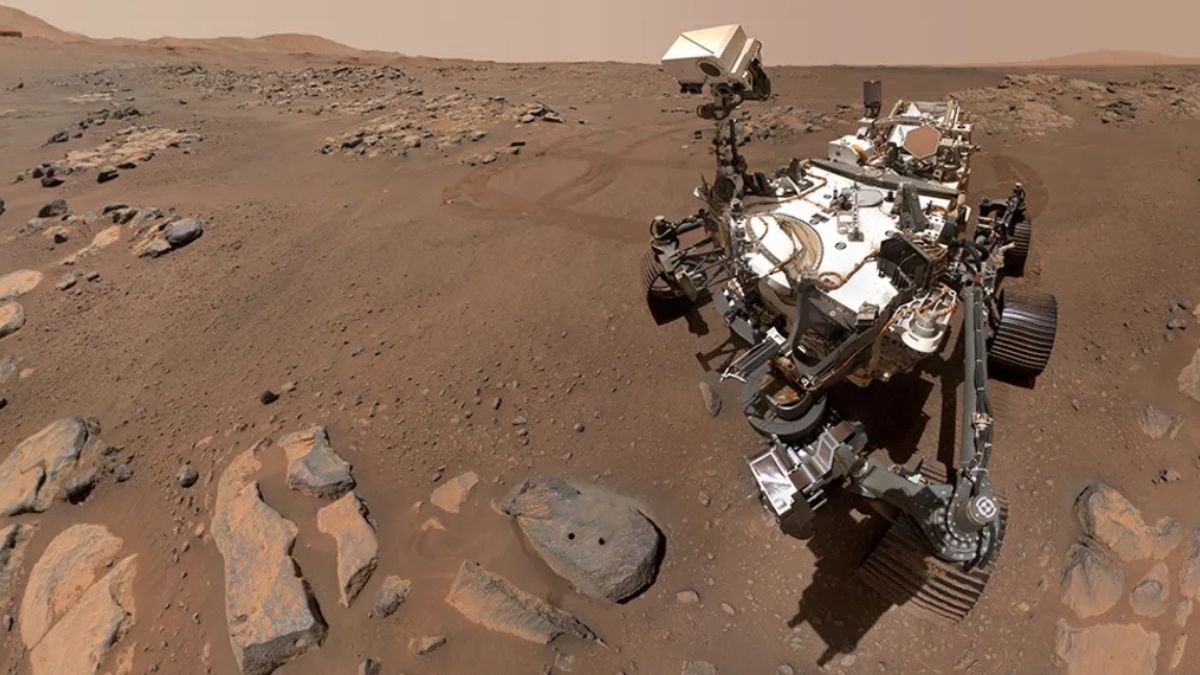In a breakthrough that has captivated scientists and the public alike, NASA announces life on Mars may no longer be confined to the realm of science fiction. Data collected by the Perseverance rover suggests that mineral structures in Martian rocks could be linked to biological processes once fueled by water. While NASA officials stress caution, the discovery marks one of the most compelling pieces of evidence yet in the search for extraterrestrial life.
A Landmark Discovery in the Jezero Crater

The rover’s latest samples were drilled from a site known as Sapphire Canyon in July 2024. Beneath the surface, Perseverance uncovered a mudstone core that revealed striking circular patterns — nicknamed “leopard spots” — along with nodules rich in organic carbon, phosphate, iron, and sulfur.
Acting NASA Administrator Sean Duffy called the findings “the closest we have ever come to discovering life on Mars,” noting that NASA announces life on Mars discoveries must be treated with extreme scientific scrutiny before making definitive claims.
Also Read – Emmy Winners 2025: Complete Winners List, Major Surprises, and Record-Breaking Moments
Minerals With Biological Parallels
Two minerals in particular have captured attention:
- Vivianite (iron phosphate) – On Earth, it often forms in watery, oxygen-poor sediments shaped by microbes.
- Greigite (iron sulfide) – Typically found in muds influenced by sulfate-reducing bacteria.
On Mars, the two minerals appear together in bullseye-like patterns, a formation that closely mirrors microbe-driven reactions on Earth. This discovery has become a central point in the conversation around whether NASA announces life on Mars could one day be confirmed beyond doubt.
The Role of Water in Mars’s Past
The samples were collected in a channel that once carried water into Jezero Crater, a basin believed to have held a vast lake billions of years ago. The layered sediments suggest slow mineral reactions in cool, water-rich environments — ideal conditions for microbial processes.
Nicky Fox, head of NASA’s Science Mission Directorate, emphasized restraint. “It’s not life itself. This is a potential biosignature, not proof of life,” she explained. Even so, the association between water and the minerals found strengthens the case whenever NASA announces life on Mars developments.
Why NASA Is Being Careful
The agency is using its Confidence of Life Detection (CoLD) scale to gauge the reliability of the findings. At present, the evidence remains at an early stage, indicating promising signals but falling short of confirmation.
Organic molecules have been detected before, but they can also arise from non-biological sources, such as meteorites or chemical reactions. This is why scientists say the sealed rock samples must be returned to Earth for deeper laboratory testing before NASA announces life on Mars as a proven fact.
Broader Implications for Habitability
If these minerals indeed formed through microbial activity, it would mean Mars once supported energy cycles comparable to those of ancient Earth. Even if the origin turns out to be purely chemical, the results still indicate that Mars harbored complex geochemical processes tied to essential building blocks of life.
This layered understanding underscores why every new report in which NASA announces life on Mars findings draws immense attention — not just from scientists, but from the world at large.
What Comes Next for Perseverance
Perseverance will continue drilling and mapping the Jezero Crater, searching for more patterns that resemble biological signatures. The long-term goal is to return sealed samples to Earth within the next decade. Once in advanced laboratories, scientists can apply isotopic and microscopic techniques far beyond the rover’s capability.
As Sean Duffy noted, “Our mission is to pursue Gold Standard Science, which means exhausting every alternative explanation before making extraordinary claims.” His remarks capture the balance of excitement and caution that defines how NASA announces life on Mars discoveries are communicated.
The Bigger Picture
This latest revelation adds momentum to decades of inquiry about Mars’s past. Each new finding pushes humanity closer to answering one of the most profound questions in science: Are we alone in the universe?
While conclusive proof has yet to emerge, the fact that NASA announces life on Mars even as a possibility represents a turning point in planetary science. Whether biological or chemical in origin, these discoveries will shape future exploration and inspire the next wave of missions to the Red Planet.
Taazanow.com- Click Here

